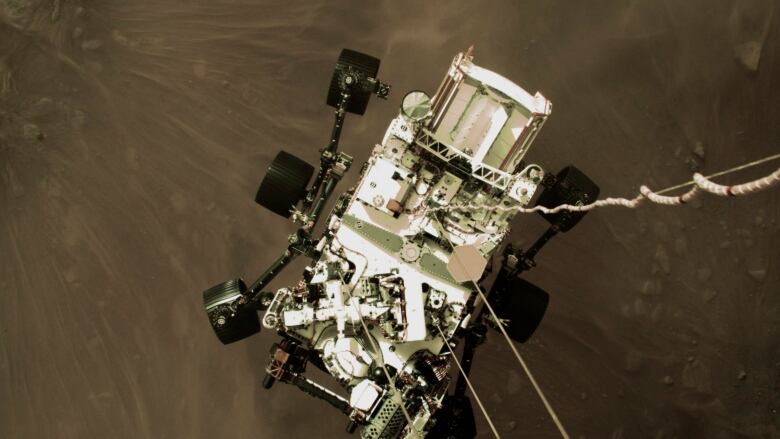Manitoba company helps land Perseverance rover on Mars with high-speed camera
Camera from Minnedosa-based Canadian Photonic Labs used in landing on Red Planet last week

It's only about the size of a loaf of bread. But a high-speed, tough-as-nails camera created by a company in Minnedosa, Man., played an instrumental role in landing NASA's Perseverance rover on Mars last week.
"You could run over it, it could fall, you could throw it out your window. That's how tough theyneed to be," Canadian Photonic Labs president Mark Wahoski said of the camera used in the monumental landing on Feb. 18.
His company, based in the southwestern Manitoba town population around 2,500manufactures high-speed cameras for industrial, scientific and military markets, according to its website.
It took years to design the Perseverance camera in a way that would allow it to withstand the planet's gravitational force and snap images fast enough, Wahoski told host Marjorie Dowhos on CBC's Radio Noon on Friday.
"It's really hard to comprehend just how fast that is," he said. "They go anywhere from normal, 30 frames per second like your cellphone camera all the way up to 250,000 frames per second."
And the testing involved to make sure it's up to the task before it gets sent into space is just as complex.
One of the simulations involved sending a metal sled with rocket engines strapped on top of it down a five-mile railroad bed in California, Wahoski said.
Another saw a helicopter lift a parachute, tied to that same rocket sled, up thousands of feet in the air before sending the sled down the track.
"On one of the tests, they determined they had to make this particular part stronger. So without those tests, the lander probably would not make it," Wahoski said.
The Manitoba company's relationship with NASA dates back roughly 15 years, he said butmuch of the work that's happened in that time has been cloaked in secrecy.
"A lot of it you can't speak about. You do the test and you do the support and you move on to the next project," he said.
However, the attention around the Perseverance rover landing hasbeen anexciting development, Wahoski said.

Once the landing finally happened, hesaid he had one word to describe how he felt: awesome.
"We had to just reflect back and say, 'Oh gee, yeah, we did some of that.'"
With files from Marjorie Dowhos












_(720p).jpg)


 OFFICIAL HD MUSIC VIDEO.jpg)
.jpg)



























































































